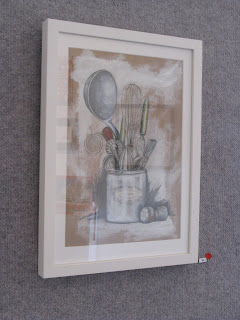The old 1908 Ewbank mangle is transforming into a printmaking press.
VERY exciting!
The old wooden rollers have been sleeved in steel tube, the rusty old mangle parts have been cleaned up, painted and reassembled and arms have been added to hold the runners for the bed.
Next step is making wooden runners to support the bed, and ... getting a bed. I priced up a laminated plastic one but... woah, the price is very scary so I think I am going for a steel bed at a fraction of the cost.
Don't worry, I'll put stoppers on it so I can't amputate my feet.
I ran a test drypoint print through it in the weekend and it's looking like it's going to be a little humdinger!























































